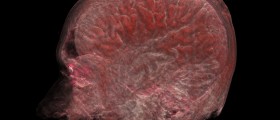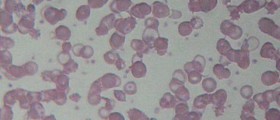
What is Wilson's Disease?
Wilson's disease is a genetic disorder characterized by build-up of copper in some organs, especially the brain and the liver. This is why the condition is also known under the name hepatolenticular degeneration. Practically all the characteristics of the disease are associated with damage to the organs affected by excess of copper. Patients develop a range of neurological/psychiatric symptoms and symptoms and signs of liver damage.
This genetic condition is inherited in an autosomal recessive fashion. So, a person may develop the disease only if two copies of the defective gene are inherited (one from each parent). In case only one copy is inherited, the person becomes a carrier, does not develop the disease, and distributes the gene to his/her offspring.
The defective gene is passed from one generation to the next. There are mutations in the specific gene, the one in charge with production of protein that normally removes the excess of copper from the body preventing its accumulation in certain tissues and organs. Under normal circumstances, copper is obtained from the food we consume. Many of us eat more copper than we actually need and the excess is easily excreted in bile.
However, in patients suffering from Wilson's disease, copper remains in the body and slowly accumulates in certain organs (the liver and brain in particular). The very presence of this chemical element is initially well tolerated. Eventually too much copper triggers irreversible damage to the affected organs and the onset of symptoms.
Wilson's Disease: Symptoms of Genetic Disorder
Symptoms and signs of Wilson's disease basically depend on what organ is affected and the extent of damage. In people in whom the copper abnormally accumulates in the liver are diagnosed with the condition much earlier compared to those in whom the brain is affected. They may experience symptoms of the disease during childhood or adolescence. Patients with only psychological issues are diagnosed later, in their adulthood.
When it comes to liver disease most common problems are tiredness, increases bleeding susceptibility and portal hypertension. Complete loss of liver function leads to confusion due to the onset of hepatic encephalopathy. In case the pressure in the portal vein remains high for a long period of time, patients develop esophageal varices, enlarged and bulging veins on the surface of the esophagus. These veins are a major source of repeated, sometimes abnormal bleeding. Spleen may get enlarged as well while certain number of patients ends with fluid build-up in the peritoneum (ascites). All the previously mentioned reflects severe damage to the liver (are characteristics of liver cirrhosis). These patients are additionally susceptible to hepatocellular carcinoma.
Neuropsychiatric symptoms affect almost a half of all patients. Initially, there is only clumsiness or mild cognitive impairment. Changes in behavior may occur as well but they do not have to be drastic. As the disease progresses patients develop neurological symptoms that resemble those in Parkinson's disease. These include bradykinesiea, slow movement, lack of balance and muscle rigidity. Hand tremor, ataxia, slurred speech and dystonia may be reported as well although they do not have occur at all. Such patients typically experience cognitive changes. If there is damage to the frontal lobe, one may be impulsive, have promiscuity issues, or be apathetic. Subcortical dementia is another problem characterized by aphasia, apraxia, agnosia, slow thinking and memory loss. Psychiatric problems these patients frequently deal with include depression, anxiety and psychosis.
There are several more organs that can be affected by excess of copper. For instance, the presence of copper in the eyes is associated with so called Kayser–Fleischer rings (KF rings), dark rings that encircle the iris of the eye. This characteristic is not noticed in all patients but is of major diagnostic importance. Apart from affecting the iris, excess of copper is also blamed for damage to the lens. Namely, it leads to a special from of cataract called sunflower cataract characterized by brown/green pigmentation of the anterior or posterior capsule of the lens. Fortunately, none of the mentioned eye changes ever trigger vision loss.
It is possible for copper to accumulate inside the kidneys and interfere with their function. Many times the consequence of such build-up is renal tubular acidosis. This medical condition is closely connected with accumulation of calcium in the kidneys, is blamed for weakening of bones due to loss of calcium and phosphate and is also a trigger of occasional aciduria.
Certain number of patients may develop hemolytic anemia although this is relatively rare complications of Wilson's disease.
Furthermore, in patients in whom there is heart involvement, the organ tends to enlarge (one develops cardiomyopathy). This is not that common characteristic of Wilson's disease but if it develops, it easily leads to heart failure and arrhythmias.
And finally, Wilson's disease may be a reason of hormonal imbalance. It is frequently connected with hypoparathyroidism, a condition affecting the parathyroid glands responsible for low calcium levels.

















Your thoughts on this
Loading...